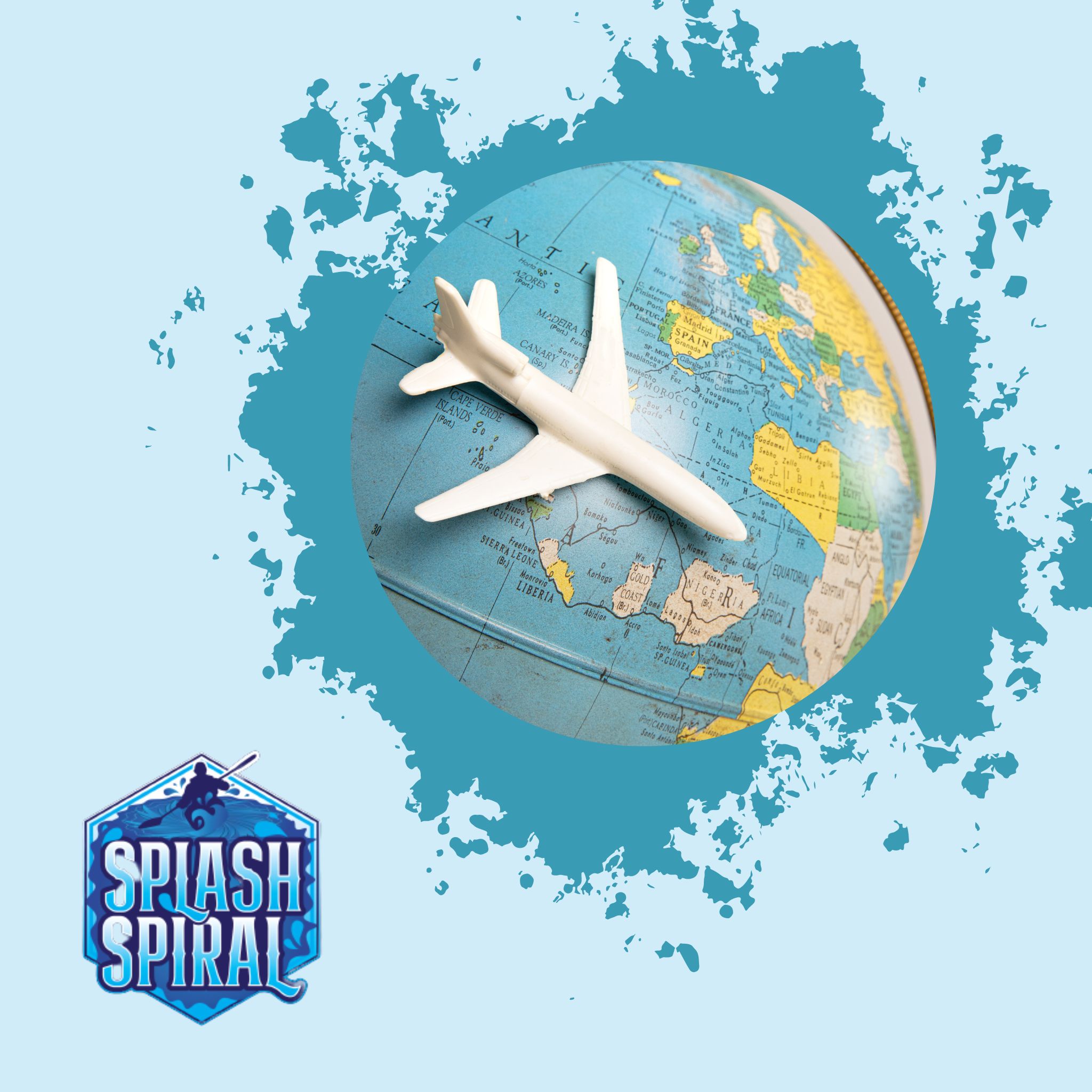
Welcome to the world of Scuba Diving and Flying
If you’re planning to go scuba diving, you may be wondering how long you should wait before flying. The answer to this question is crucial to your safety.
Scuba diving involves spending time underwater and breathing compressed air. As a result, nitrogen accumulates in our body tissues, which can cause problems if not released gradually.
Flying involves changes in air pressure, which can lead to decompression sickness if divers fly too soon after scuba diving. In this article, we’ll discuss how long to wait before flying after scuba diving and why it’s essential.
The Importance of Knowing How Long To Wait
It’s essential to understand the potential risks associated with flying after scuba diving and why following recommended guidelines is crucial for your safety. When we dive deep into the ocean depths, our bodies absorb nitrogen at an increased rate due to the higher pressure experienced underwater. When we ascend back up towards the surface level slowly, our bodies release that accumulated nitrogen appropriately through a process called off-gassing or decompression stops.
If you fail to off-gas correctly during your last dive or ascend too quickly towards the surface level during any dive session, it increases your risk of developing decompression sickness when flying. So knowing how long you should wait before flying becomes very important as it gives enough time for our body tissues’ nitrogen levels to normalize as much as possible before experiencing any changes in air pressure while traveling via airlines.
How Long to Wait Before Flying After Scuba Diving
Scuba diving is an exciting and adventurous activity that requires careful planning and preparation. One crucial aspect of scuba diving that is often overlooked is the amount of time you need to wait before flying after a dive.
The reason for this waiting period is because when you are scuba diving, you are breathing compressed air, which can cause nitrogen to build up in your body. If you fly too soon after a dive, the change in altitude can cause the nitrogen bubbles to expand rapidly, leading to decompression sickness (DCS).
Factors That Affect How Long to Wait
Several factors affect how long you need to wait before flying after scuba diving. The depth of your dive, the duration of your dive, and the number of dives you have done all play a role in determining how much nitrogen has built up in your body. Generally speaking, the deeper and longer your dives are, and the more dives you do within a short period, the longer you need to wait before flying.
General Guideline for Waiting Time Based on Dive Profile
The general guideline for waiting time based on dive profile suggests that it is safe to fly within 12 hours after a single no-decompression dive or multiple dives over several days provided that all safety stops have been completed correctly. For those who have done repetitive dives or more than one day’s diving or decompression stops during their previous dives should consider waiting at least 18-24 hours before flying. It’s essential to note that these guidelines are not foolproof as individual circumstances may vary depending on personal health history or any other underlying medical condition.
Importance of Following Recommended Waiting Time
It cannot be overstated enough how vital it is always to follow recommended waiting times after scuba diving before flying. Even if you feel okay and have not experienced any symptoms of DCS, flying too soon after diving can still be dangerous.
The recommended waiting times are put in place to reduce the risk of decompression sickness or other potential health risks associated with flying too soon after scuba diving. Waiting the recommended time before flying after scuba diving is crucial for your safety and well-being.
Always ensure that you follow the general guideline for waiting times based on dive profile, stay hydrated, and avoid alcohol or sedatives before your flight. These simple steps can help keep you safe and ensure that you can continue to enjoy the thrill of scuba diving for many years to come.
The Risks of Flying Too Soon After Scuba Diving
Scuba diving is a unique activity that comes with its own set of risks. One of these risks is decompression sickness (DCS), also known as “the bends”. DCS occurs when nitrogen bubbles form in the bloodstream and tissues due to rapid changes in pressure during a dive, particularly during ascent.
These bubbles can cause pain, joint stiffness, fatigue, and even paralysis or death if left untreated. When you fly too soon after scuba diving, the pressure in an airplane’s cabin decreases as it climbs higher into the atmosphere.
This decrease in pressure can cause any remaining nitrogen bubbles to expand rapidly and potentially cause serious health problems such as arterial gas embolism (AGE) or stroke. The symptoms of AGE include chest pain, coughing up blood, or sudden loss of consciousness.
Other potential risks associated with flying too soon after scuba diving include ear barotrauma from changes in air pressure (painful popping or ringing in ears), sinus congestion or infections which can lead to vertigo or dizziness, hypoxia (lack of oxygen from reduced cabin pressure), and increased risk for blood clots due to prolonged sitting. So why take the risk?
It’s important to wait the recommended amount of time before flying after scuba diving to avoid these potential complications and ensure a safe return trip home. The next section will discuss how long you should wait before flying after scuba diving.
Tips for reducing the risk of DCS when flying after scuba diving
Staying hydrated before and after the dive
It’s crucial to stay hydrated before and after scuba diving, as dehydration can increase the risk of decompression sickness. Drinking plenty of water will help flush out any excess nitrogen in your body and keep you feeling energized throughout the day. Be sure to avoid sugary drinks or alcohol, as they can lead to dehydration.
Avoiding alcohol or sedatives before the flight
One of the most important tips for reducing the risk of DCS is avoiding alcohol or sedatives before your flight. These substances can affect your body’s ability to off-gas nitrogen, which increases your risk of developing decompression sickness. If you must drink alcohol or take a sedative, make sure you wait at least 24 hours after your last dive before flying.
Taking a break between the last dive and the flight
Another essential tip for reducing your risk of decompression sickness is taking a break between your last dive and your flight. The recommended waiting time is at least 18-24 hours between diving and flying. This gives your body enough time to off-gas any excess nitrogen that may have accumulated during the dive.
Using a dive computer to track nitrogen levels during the dive
Using a dive computer is an excellent way to track how much nitrogen has accumulated in your body during a dive. This tool measures depth, time underwater, and calculates how much nitrogen has dissolved in your tissues over time. It’s essential to monitor these levels closely throughout each dive and ensure that you follow safe diving practices prescribed by experienced divers or instructors.
Overall, following these tips can significantly reduce the risks associated with scuba diving followed by air travel. While it’s important not to rush things, taking the necessary measures can lead to a safe and enjoyable experience.
Remember to stay hydrated, avoid alcohol or sedatives before your flight, take a break between your last dive and the flight, and use a dive computer to track nitrogen levels during the dive. With these precautions in mind, you’ll have a safe and unforgettable scuba diving experience!
Conclusion
Summary of Key Points Discussed
In this article, we have discussed the importance of waiting before flying after scuba diving. We have reviewed the factors that affect how long to wait, such as depth, duration and number of dives.
We also presented a general guideline for waiting times based on dive profile. We discussed the risks associated with flying too soon after scuba diving and provided tips for reducing the risk of DCS.
The Importance of Following Recommended Guidelines for Safe Scuba Diving and Air Travel
It’s essential to remember that scuba diving is an exciting and adventurous activity that requires careful planning and execution to ensure safety. The same goes for air travel – it’s crucial to follow recommended guidelines for safe air travel.
Therefore, it’s essential always to follow dive protocols established by certification agencies like PADI or SSI and abide by their recommendations for how long you should wait before flying after a dive. By following these guidelines, you can reduce your risk of getting decompression sickness or other potential health issues associated with flying too soon after scuba diving.
Remember that safety should always come first when participating in any adventure sport like scuba diving or air travel. By following recommended guidelines established by industry professionals and using good judgment when planning your dives and flights, you’ll be able to fully enjoy these activities while staying safe at all times!







